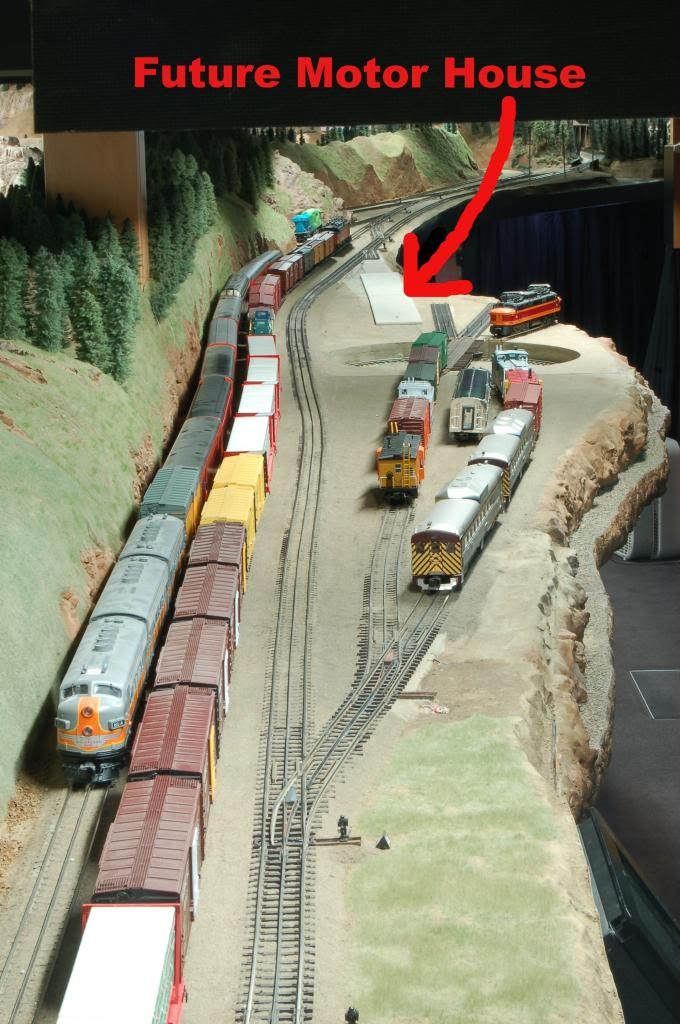Hi all,
Sam, thanks for your kind words above. It's been a lot fun over the last few years getting to see what people have been building with ScaleTrax. Early on Rich Battista and CSX Al's layouts were very inspiring. Without seeing their work I may never have had made the effort to learn how to work with ScaleTrax.
The first layout I built with ScaleTrax is a simple display loop in a grocery store. I don't have any photos of that layout worth posting, but it's one I refer to whenever anyone expresses any concern about the thin center rail and roller wear. After 250,000+ scale miles of running over eight years there's no uneven wear on the rollers.
The second layout I build with ScaleTrax was a relatively simple 19' x 19' layout. The gentleman who owns this layout wanted something with a lot of play value for the grand kids and all O-72+ curves for his scale Big Boy. We packed in a good amount of activity with operating accessories, a logging spur, a stub ended yard, and a reversing loop. The wide curves left plenty of room for scenery elements and the flex track came in handy in several places.
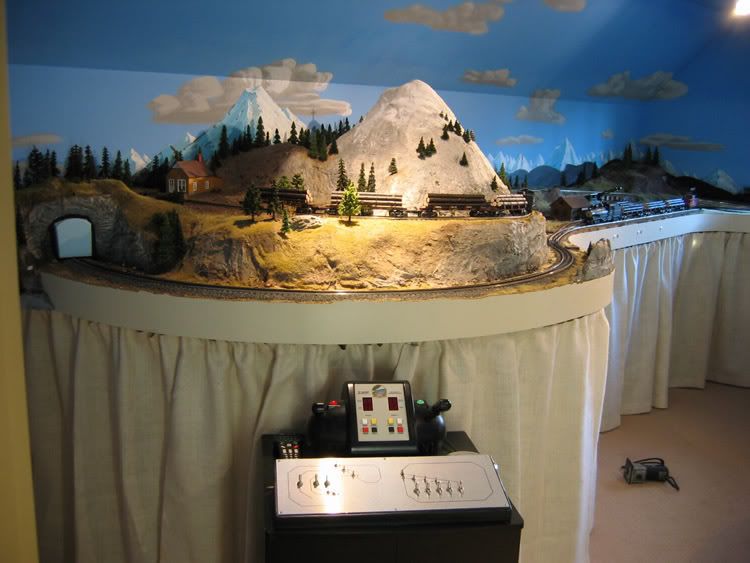
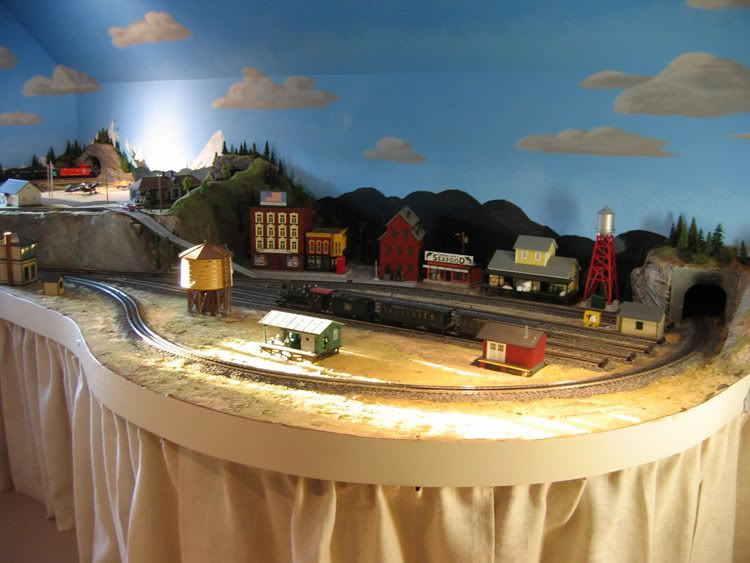
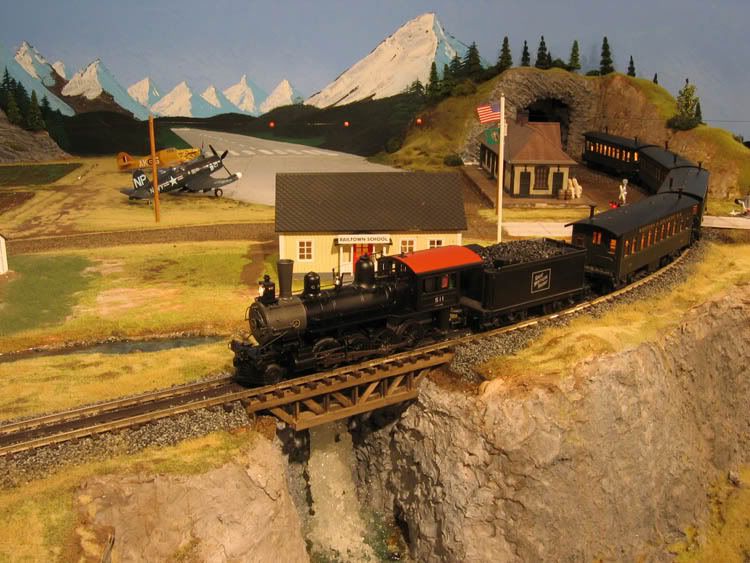
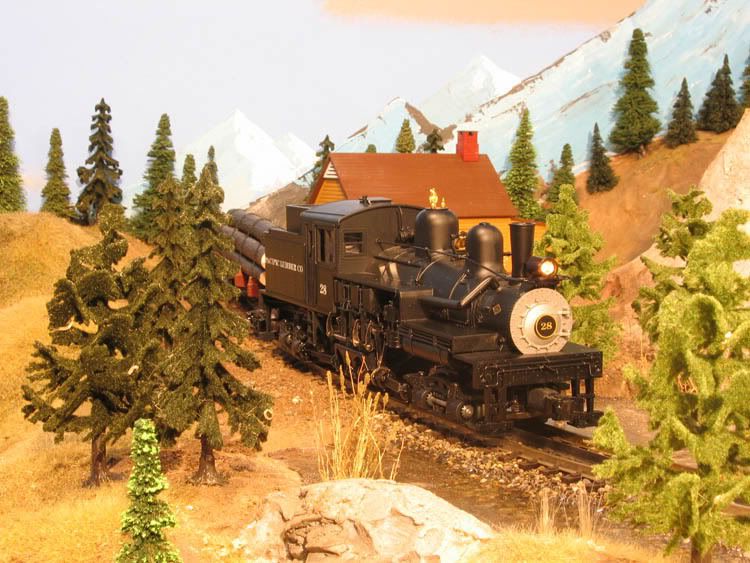
That layout was very successful. When I started working with Peter Hambling to build the NorthWest Trunk Lines I took him to see that layout in action and he was very impressed. At first, the NWTL seemed large enough that we could get by with #4 and #6 switches without much trouble. The flex track was ideal for the wide sweeping curves on the 1100ft. mainline.
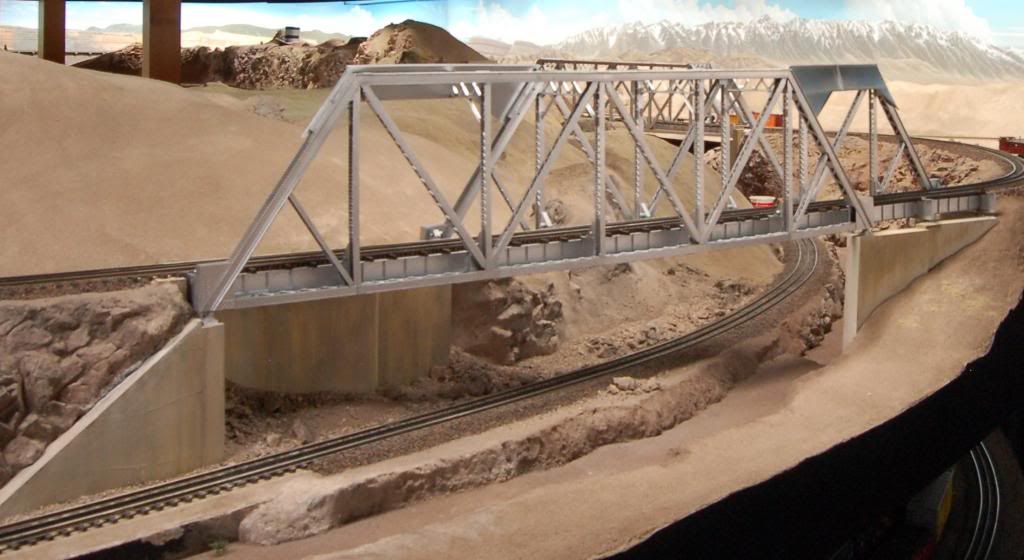
ScalTrax proved to be just the ticket for modeling real life locations with meandering shallow curves, such as Avery, Idaho, and Silver Bow, Montana.
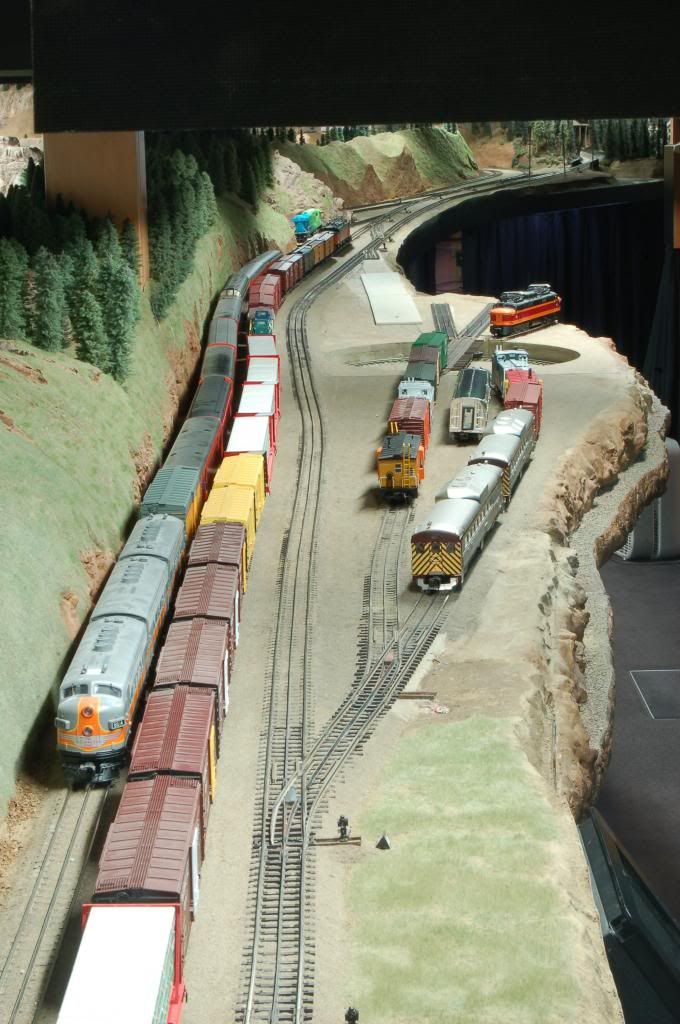
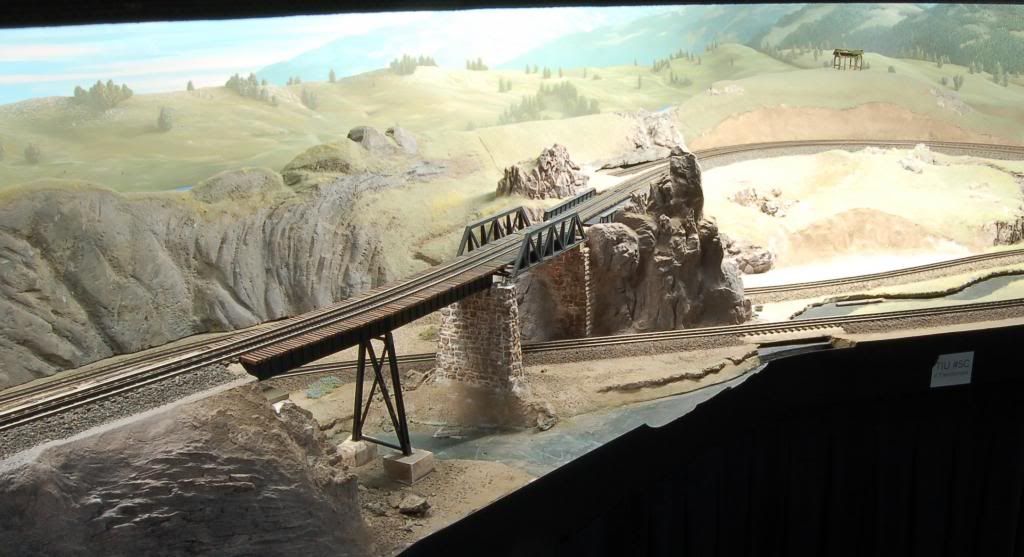
The narrow center rail really improves the overall look, especially when sighting down the track
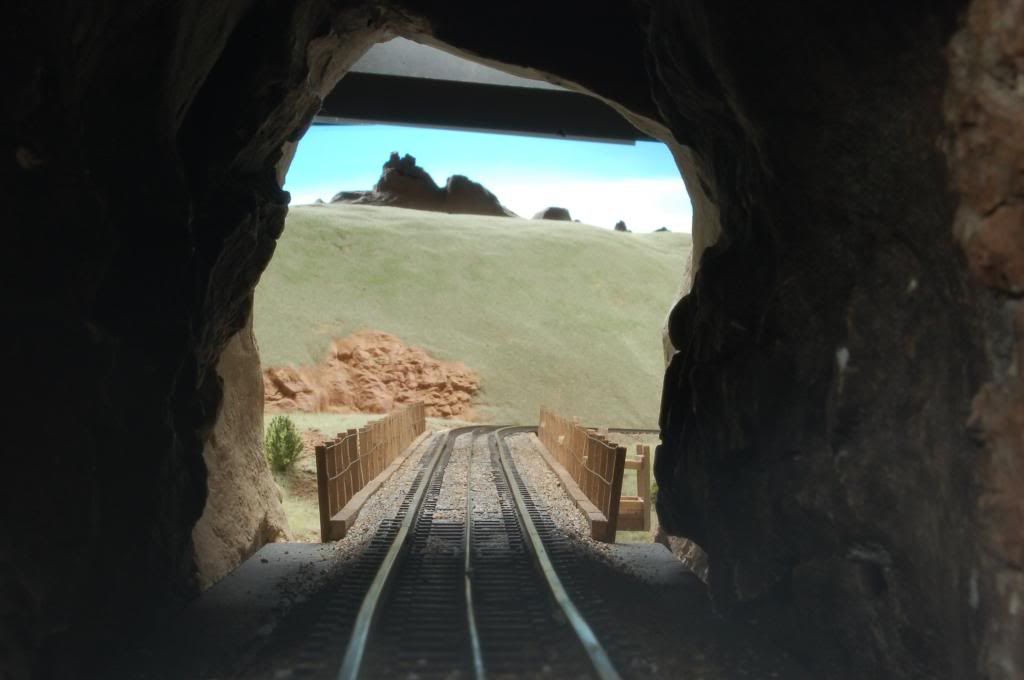
As Ted mentioned above, the ties on ScaleTrax are true to scale for length, width, and height. This lends the system well to hand laying because commercially produced O-scale wood ties are a perfect match. Hand laying doesn't need to be complicated. Simple projects, such using tightly spaced long ties across a bridge, or an ash pit with no ties at all, are really quite easy. What's more, they are small enough to accomplish in an afternoon, and add a great deal of visual appeal. Here's a stock Atlas Pratt truss bridge with the plastic ties replaced with wood and ScaleTrax flex rail laid across. I also added code 148 guard rails for extra visual appeal.

And, here's an ash pit with no ties and "concrete" posts supporting the track.
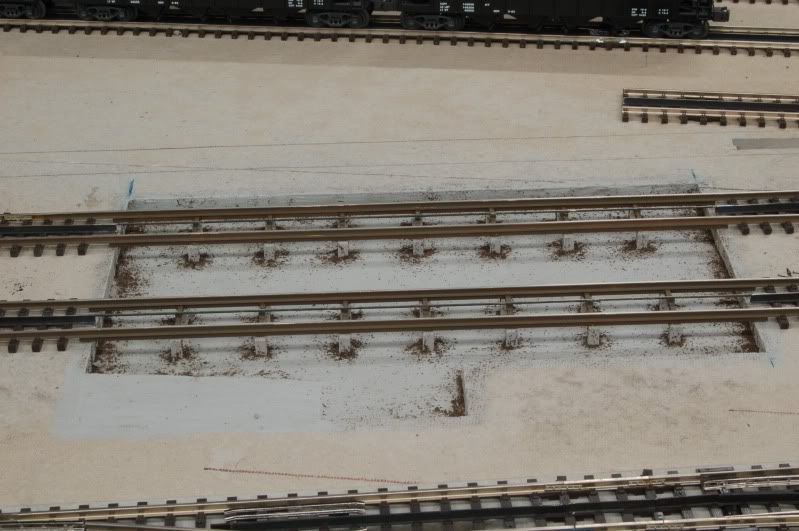
Spiking rail can actually be fun as long as the project isn't so large that it seems overwhelming. There's nothing like putting in that last spike on a hand laid project! 
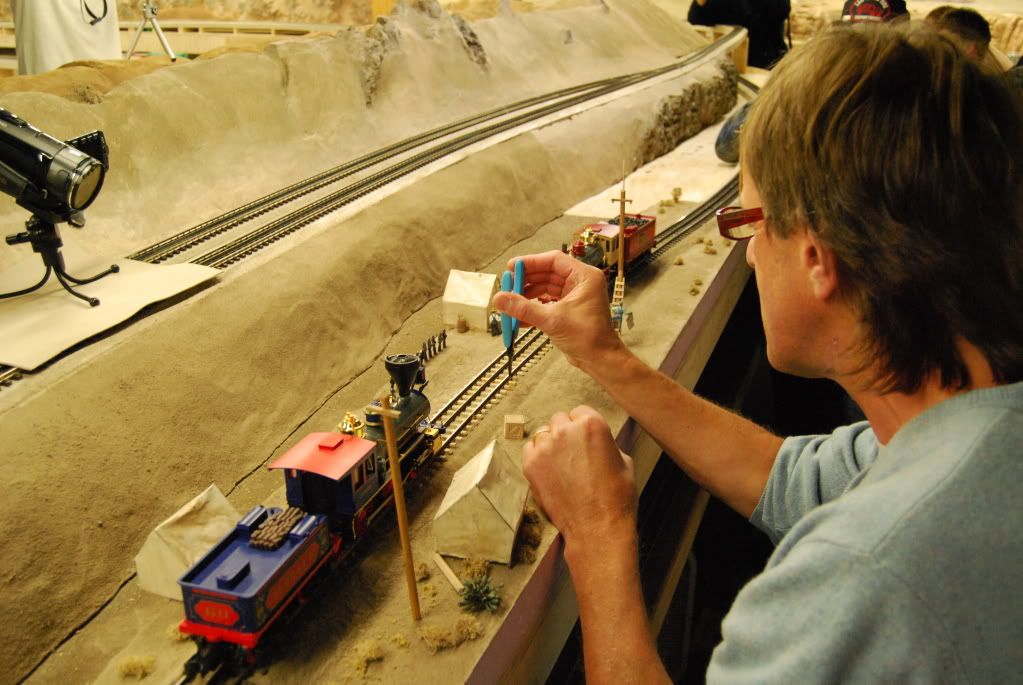
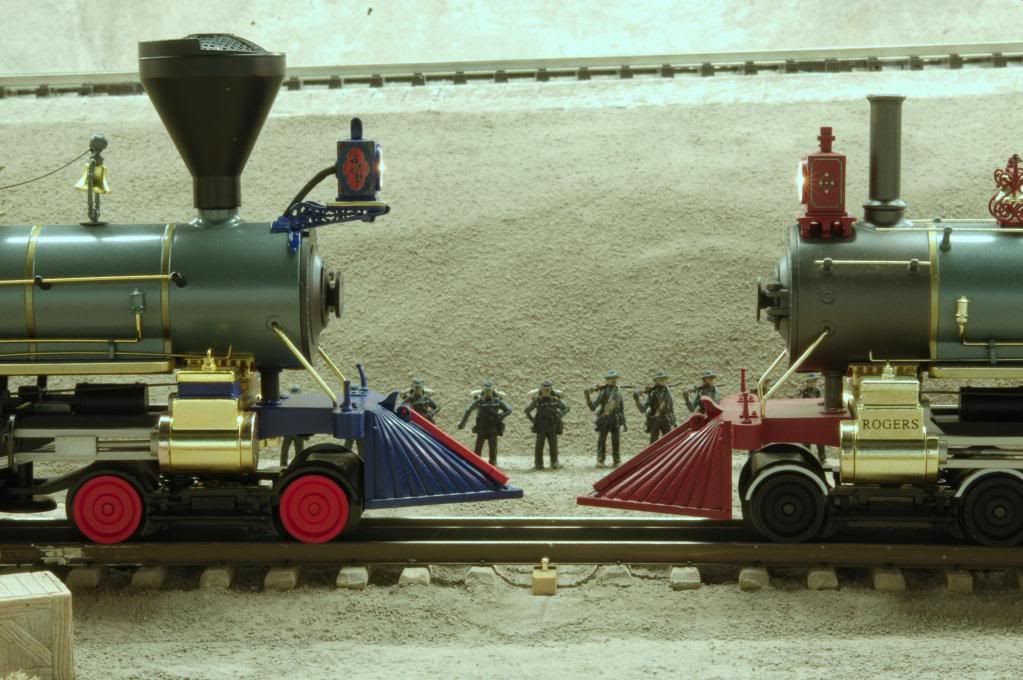
It's true that ScaleTrax doesn't present the variety of sectional curves and small radii switches that Atlas and Ross/Gargraves offer. However, Atlas only makes one more switch than ScaleTrax in O-72 plus sizes (O-72 wye) and the flexible flex track makes any radii obtainable. The important part is having the numbered switches for tight parallel spacing in the yards.

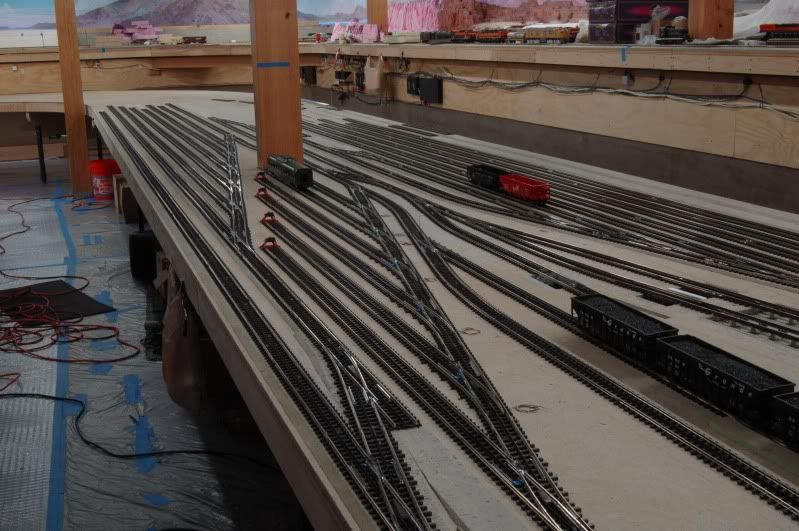
As the work progressed on the NWTL we realized how much the track plan could benefit from a curved switch in one particular spot. Ted took of the project of building a curved switch. Once he built one I realized there was a second place that could really use a curved switch... and a third, and a forth, and a fifth...
 There are now 10 curved switches on the NWTL that are all patterned after Ross #6 and #8 curved switches.
There are now 10 curved switches on the NWTL that are all patterned after Ross #6 and #8 curved switches.
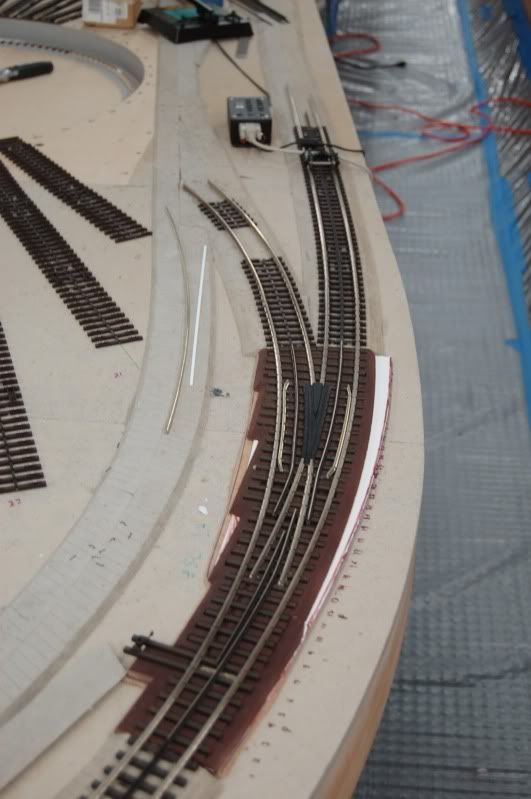
Even if your layout space forces you to use curves smaller than O-72 you can build a lot of layout in a small space with ScaleTrax. MTH asked me to design an assortment of ScaleTrax layouts that have been in the last several catalogs. All but one of the layouts, the Tall Timber Mountain, was designed using all sectional track.
Pat mentioned earlier that some ScaleTrax switch were out of stock when he was shopping back in Spring. That's still the case for #4 and #6 switches. Several months ago MTH asked for my suggestions on how to improve the switches in their next production run. I don't have any specific information about how those suggestions are being implemented, but it is a clear indication that MTH intends to improve the quality of the switches going forward. When the new #4's and #6's arrive we should see several improvements.







































